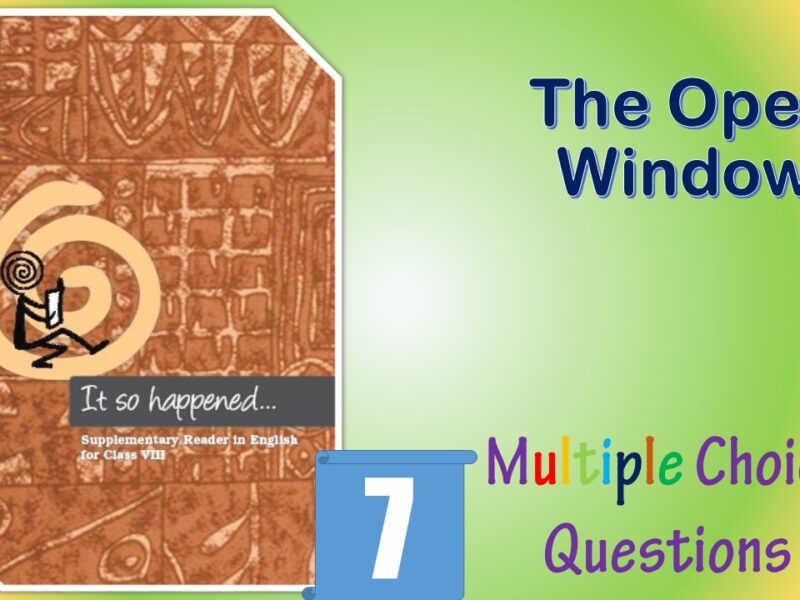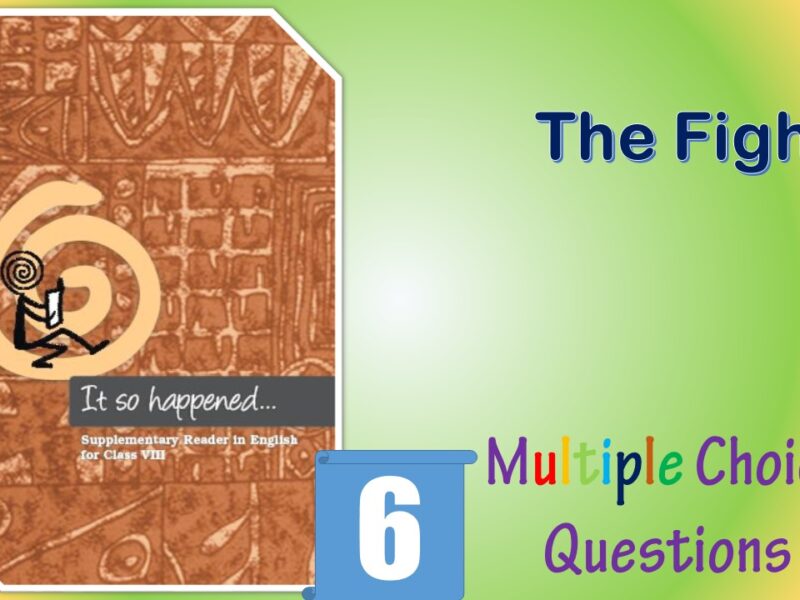Class 8 Social Science History MCQ Colonialism And The City with Answers is Prepared Based on Latest Exam Pattern. Students can solve NCERT Class 8 Social Science History MCQ Colonialism And The City with Answers to know their preparation level.
Students who are searching for NCERT Class 8 Social Science History MCQ Colonialism And The City with Answers are compiled here to get good practice on all fundamentals. Know your preparation level on MCQ Questions for Class 8 Social Science History MCQ Colonialism And The City with Answers. You can also verify your answers from the provided Class 8 Social Science History MCQ Colonialism And The City with Answers. So, ace up your preparation with MCQ of Class 8 Social Science History MCQ & NCERT Textbook solutions Examinations.
CBSE Class 8 Social Science History MCQ
Colonialism And The City
with Answers
Question :Which of the following was not a Presidency?
(a) Bombay
(b) Madras
(c) Bengal
(d) Delhi
Answer : (d) DelhiShow Answer :
For administrative purposes, colonial India was divided into three Presidencies namely Bombay, Bengal and Madras.
Question :What are the Presidency cities under British in India?
(a) Bombay
(b) Madras
(c) Calcutta
(d) All of these
Answer : (d) All of theseShow Answer :
Three presidency towns under British in India are Bombay, Madras and Calcutta.
Question :What was the immediate cause of the rise of modem cities in western world?
(a) Industrialization
(b) Urbanization
(c) De-urbanization
(d) None of these
Answer : (a) IndustrializationShow Answer :
Industrialization was the major cause of the rise of modern cities in Western world.
Question :Name a temple town of South India?
(a) Son Temple
(b) Madurai Temple
(c) Balaji Temple
(d) All of these
Answer : (d) All of theseShow Answer :
Madurai was the temple town of South India.
Question :Which was NOT the new British Port in the late eighteenth century?
(a) Bombay
(b) Machlipatnam
(c) Madras
(d) Calcutta
Answer : (b) MachlipatnamShow Answer :
Question :Which region was NOT de-urbanised in the 19th century?
(a) Machlipatnam
(b) Surat
(c) Seringapatam
(d) Bombay
Answer : (d) BombayShow Answer :
Question :Which was NOT the place of East India Company’s ‘factories’?
(a) Calcutta
(b) Surat
(c) Madras
(d) Delhi
Answer : (d) DelhiShow Answer :
Question :When did the British gain control of Delhi?
(a) 1800
(b) 1803
(c) 1805
(d) 1810
Answer : (b) 1803Show Answer :
Question :Which of the following was manufacturing town?
(a) Madurai
(b) Dacca
(c) Surat
(d) Agra
Answer : (b) DaccaShow Answer :
Question :Which of the following city was Not developed as Presidency city in colonial India?
(a) Agra
(b) Bombay
(c) Madras
(d) Calcutta
Answer : (a) AgraShow Answer :
Question :How many Delhi Muslints migrated in 1947 partition of India?
(a) Over two-third of the Delhi Muslims
(b) Over one-third of the Delhi Muslims
(c) Over three-fourth of the Delhi Muslims
(d) None of the above
Answer : (a) Over two-third of the Delhi MuslimsShow Answer :
Question :Most of the migrants in Delhi were from
(a) Bengal
(b) Assam
(c) Punjab
(d) Rajasthan
Answer : (c) PunjabShow Answer :
Question :When did Delhi become the capital of British India?
(a) 1900
(b) 1905
(c) 1911
(d) 1915
Answer : (c) 1911Show Answer :
Question :Zinat-al-Masjid was converted into Which Building?
(a) Residential house
(b) Warehouse
(c) Slaughter house
(d) Bakery
Answer :(d) BakeryShow Answer :
Question :Among the following, which place in Bengal was the important centre of Jamdani weaving ?
(a) Chittagong
(b) Shillong
(c) Lucknow
(d) Dacca
Answer :(d) DaccaShow Answer :
Question :Which of the following city was Not developed as Presidency city in colonial India?
(a) Agra
(b) Bombay
(c) Madras
(d) Calcutta
Answer :(a) AgraShow Answer :
Question :Before 1750, __ was the largest producer of cotton textiles in the world.
(a) India
(b) Britain
(c) Burma
(d) China
Answer :(a) IndiaShow Answer :
Question :What are the Presidency cities under British in India?
(a) Bombay
(b) Madras
(c) Calcutta
(d) All of these
Answer :(d) All of theseShow Answer :
Question :Which type of cloth considers Chintz, cossaes, khassa, bandanna?
(a) Silk cloth
(b) Jute cloth
(c) Cotton coloured cloth
(d) Printed cotton cloth
Answer :(d) Printed cotton clothShow Answer :
Question :Which of the following was not a Presidency?
(a) Bombay
(b) Madras
(c) Bengal
(d) Delhi
Answer :(d) DelhiShow Answer :
Question :Name the machine that increased the productivity of the traditional spindles in textile industry
(a) Spinning engine
(b) Flying shuttle
(c) Steam engine
(d) Spinning Jenny
Answer :(d) Spinning JennyShow Answer :
Question :Most of the migrants in Delhi were from
(a) Bengal
(b) Assam
(c) Punjab
(d) Rajasthan
Answer :vShow Answer :
Question :From where did the English word Chintz derive from?
(a) Texture
(b) Chhint
(c) China
(d) Consistency
Answer :(b) ChhintShow Answer :
Question :Which region was NOT de-urbanised in the 19th century?
(a) Machlipatnam
(b) Surat
(c) Seringapatam
(d) Bombay
Answer :(d) BombaShow Answer :
Question :Tipu sultan’s sword is made up of which metal?
(a) Wood
(b) Wootz
(c) Glass
(d) None of these
Answer :(b) WootzShow Answer :
Question :Name a temple town of South India?
(a) Son Temple
(b) Madurai Temple
(c) Balaji Temple
(d) All of these
Answer :(d) All of theseShow Answer :
Question :Among the following, which place in Uttar Pradesh l was the important centre of Jamdani weaving?
(a) Kanpur
(b) Shillong
(c) Dacca
(d) Lucknow
Answer :(d) LucknowShow Answer :
Question :When did the British gain control of Delhi?
(a) 1800
(b) 1803
(c) 1805
(d) 1810
Answer :(b) 1803Show Answer :
Question :Which country from 1850’s came to be known as ‘workshop of the world’?
(a) England
(b) India
(c) Japan
(d) Africa
Answer :(a) EnglandShow Answer :
Question :What is Urbanization?
(a) People begin to reside in towns
(b) People begin to reside in village
(c) People begin to reside in forest
(d) None of these
Answer :(a) People begin to reside in townsShow Answer :
Question :Apart from the English, who were the other traders who benefitted and traded the Indian textiles?
(a) Dutch and French
(b) Greek and Chinese
(c) Chinese
(d) West Indians
Answer :(a) Dutch and FrenchShow Answer :
Question :When did Delhi become the capital of British India?
(a) 1900
(b) 1905
(c) 1911
(d) 1915
Answer :(c) 1911Show Answer :
Question :Specialized block prints used by weavers was known as
(a) Tanti
(b) Chhipigars
(c) Rangrez
(d) Solvyns
Answer :(b) ChhipigarsShow Answer :
Question :What is a Dargah?
(a) Temple
(b) Guru dwara
(c) Tomb
(d) None of these
Answer :(c) TombShow Answer :
Question :Name the legislation in 1720 banning the use of printed cotton textiles chintz in England.
(a) Silk Act
(b) Calico act
(c) Bandanna Act
(d) Chintz Act
Answer :(b) Calico actShow Answer :
Question :Which of the following was woven in Surat, Ahmedabad and Patan and valued in Indonesia?
(a) Patola
(b) Muslin
(c) Calico
(d) Jamdani
Answer :(a) PatolaShow Answer :
Question :When was Delhi rebuilt as the capital of British India?
(a) 1945
(b) 1963
(c) 1974
(d) 1912
Answer :(d) 1912Show Answer :
Question :Choose the first stage of production, a work done mostly by women.
(a) Spinning
(b) Dying
(c) Printing
(d) Threading
Answer :(a) SpinningShow Answer :
Question :Which is the largest and grandest mosque in Delhi?
(a) Jama Masjid
(b) Sunheri
(c) Begumpur mosque
(d) None of them
Answer : (a) Jama MasjidShow Answer :
Jama Masjid is the largest and grandest mosque in Delhi. There was no place higher than this mosque within the city then. Delhi during Shah Jahan’s time was also an important center of Sufi culture.
Question :Name three court towns developed during 17th century?
(a) Delhi
(b) Agra
(c) Lahore
(d) All of these
Answer : (d) All of theseShow Answer :
Three court towns developed during 17th century were Delhi, Agra and Lahore.
Question :What is Urbanization?
(a) People begin to reside in towns
(b) People begin to reside in village
(c) People begin to reside in forest
(d) None of these
Answer : (a) People begin to reside in townsShow Answer :
Urbanization is the process by which more and more people began to reside in towns and cities. Cities such as Machlipatnam, Surat and Seringapatam were deurbanized during the nineteenth century.
Question :Who built Red fort?
(a) Babur
(b) Shah jahan
(c) Akbar
(d) None of these
Answer : (b) Shah jahanShow Answer :
The most splendid capital of all was built by Shah Jahan. Shahjahanabad was begun in 1639 and consisted of a fort-palace complex and the city adjoining it. Lal Qila or the Red Fort, made of red sandstone, contained the palace complex.
Question : Which period was referred to as the period of Delhi Renaissance?
(a) 1820-1830
(b) 1830-1857
(c) 1830-1847
(d) 1820-1847
Answer : (b) 1830-1857Show Answer :
Many historian refer to the period from 1830 to 1857 as a period of the Delhi renaissance. The establishment of the Delhi College in 1792 led to a great intellectual flowering in the sciences as well as the humanities, largely in the Urdu language.
Question :Why did the Lahori Gate Improvement Scheme was planned in 1888?
(a) Draw the residents away from the old city to a new type of market square.
(b) Reduce congestion.
(c) Make way for hand-pull carts.
(d) Increase population.
Answer : (a) Draw the residents away from the old city to a new type of market square.Show Answer :
Lahori Gate Improvement Scheme was planned in 1888 to draw the residents away from the old city to a new type of market square.
Question :Zinat-al-Masjid was converted into Which Building?
(a) Residential house
(b) Warehouse
(c) Slaughter house
(d) Bakery
Answer : (d) BakeryShow Answer :
The Zinat-al-Masjid was converted into a bakery. No worship was allowed in the Jama Masjid for five years. One-third of the city was demolished, and its canals were filled up.
Question :What is a Dargah?
(a) Temple
(b) Guru dwara
(c) Tomb
(d) None of these
Answer : (c) TombShow Answer :
The tombs of the Sufi saints are called Dargah.
Question :How many capital cities were founded in a small area of about 60 sq. miles on the left bank of river Yamuna?
(a) 14
(b) 20
(c) 18
(d) 25
Answer : (a) 14Show Answer :
14 capital cities were found on the left bank of river Yamuna in area of around 60 sq. mile.
Question :When was Delhi rebuilt as the capital of British India?
(a) 1945
(b) 1963
(c) 1974
(d) 1912
Answer : (d) 1912Show Answer :
In 1912,Delhi was rebuilt as the capital of British India.
Fill in the blanks
Question : In the 1870s, the western walls of ____________________. were broken to establish the railways.
Answer : ShahjahanabadShow Answer :
Question :The Mughal aristocracy in the 17th and 18th century lived in ____________________.
Answer : havelisShow Answer :
Question :A haveli (is) housed by many ____________________.
Answer : familiesShow Answer :
Question :The central dome of the Viceroy’s Palace was copied from the ____________________.
Answer : Buddhist StupaShow Answer :
Question :The British exiled Bahadur Shah Zafar to ____________________.
Answer : Burma (now Myanmar)Show Answer :



